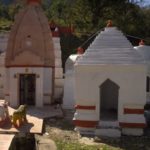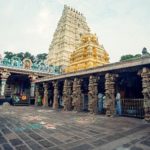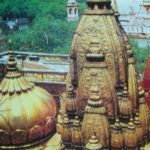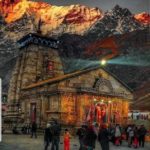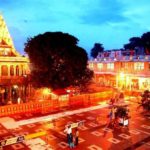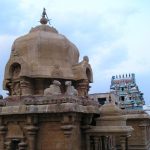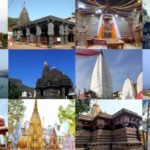Kanchi Kailasanathar Temple is a Shiva Temple in Tamilnadu. It is one of the oldest temples in the Dravidian style architecture. The main deity here is Kailasanathar.
This beautiful temple is located in Kanchipuram, one of the major temple towns of Tamil Nadu. This was one of the first stone temples built in South India. Moreover, its architecture and sculptures contain exquisite details.
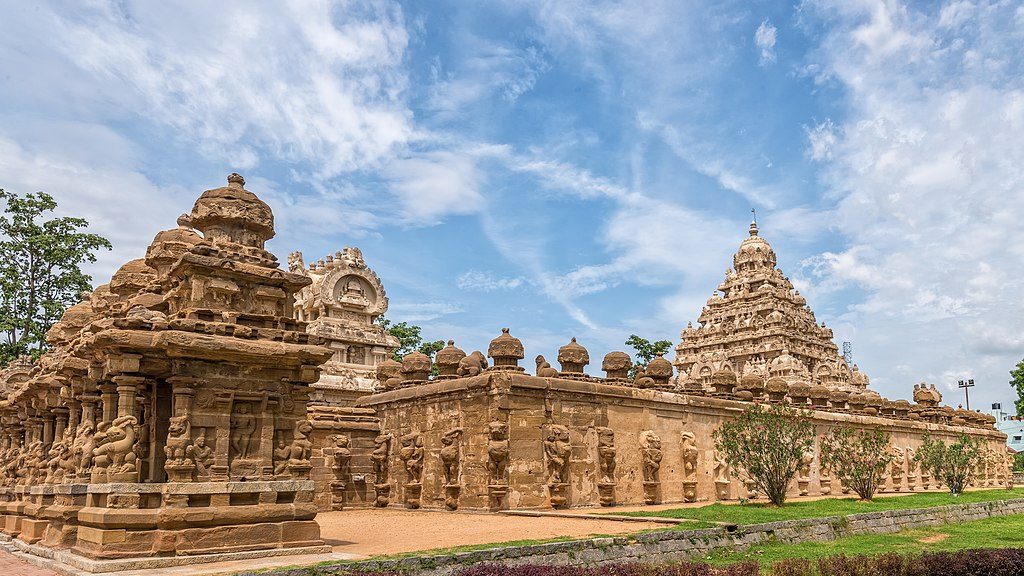
Kanchi Kailasanathar Temple History
Early temples in India were built of wood or brick. Sometimes, they were rock-hewn structures or built in caves. The Pallava dynasty first began to build stone temples. This temple in Kanchi is one of the earliest examples of stone temples in South India.
Narasimhavarman II or Rajasimhan of the Pallava dynasty began the construction of the Kanchi Kailasanathar temple in the 7th century A.D. Rajasimha’s son Mahendravarman-III later completed the work in the 8th century. This sandstone temple has a granite foundation.
The halls, pathways, and pillars contain numerous sculptures. Kanchi Kailasanathar temple is the first structural temple built in South India. This, along with the Vaikunta Perumal temple, are among the finest examples of early Dravidian temple architecture.
Kanchi Kailasanathar Temple Sculptures
This golden-hued sandstone structure has a granite foundation that sturdily supports the huge temple. Kanchi Kailasanathar temple showcases the typical early Pallava architecture, with finely hewn sculptures decorating the walls, halls, and pillars.
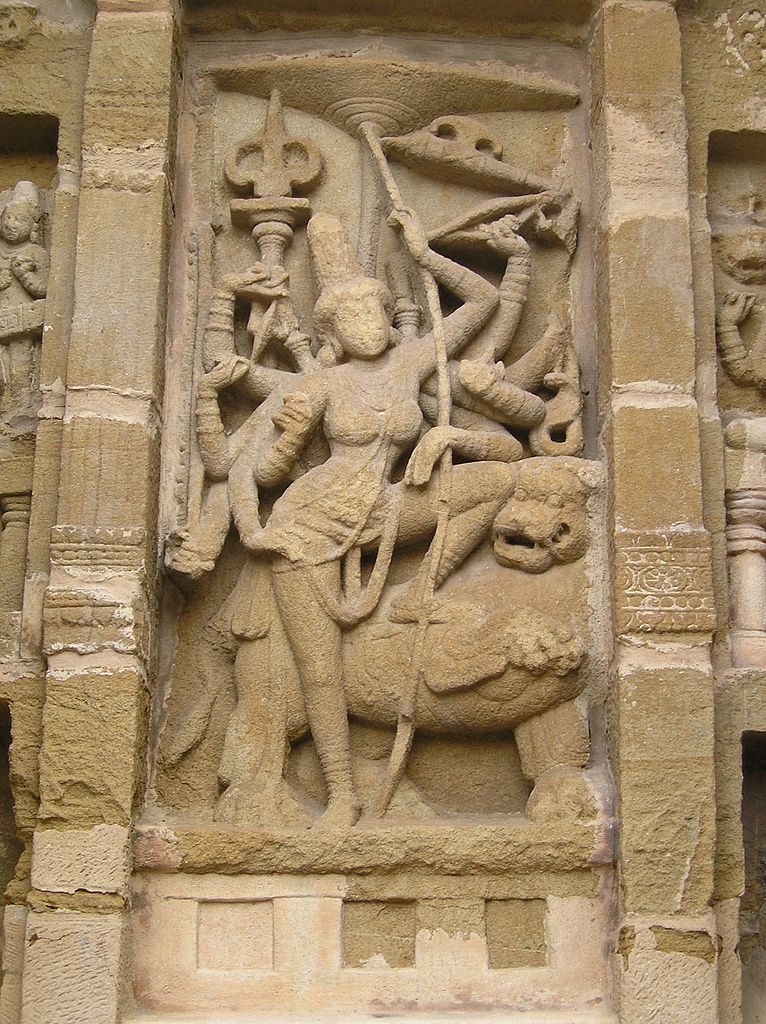
A huge compound wall encloses the whole temple, with a gopuram over the entrance. The main shrine contains a 16-sided Shiva lingam. Further, the wall around this shrine has 58 small shrines built into it, each showcasing different dance poses of Shiva and Parvati.
This temple structure is complete, with a garbhagriha that houses the main deity, an antarala, a hall or mantapa, a gopuram over the entrance, and a full compound wall. The main shrine has a pedestal decorated with intricate carvings of gods. There is also a Nandi sculpture (bull) near the deity, standing guard.
The Pillars and Walls of Kanchi Kailasanathar Temple
The temple pillars are all decorated with figures of yali and other mythical creatures. Typically, most pillars have the Yali at the base. Yalis are lion-headed figures. These mythical beasts are a common feature in most temples.
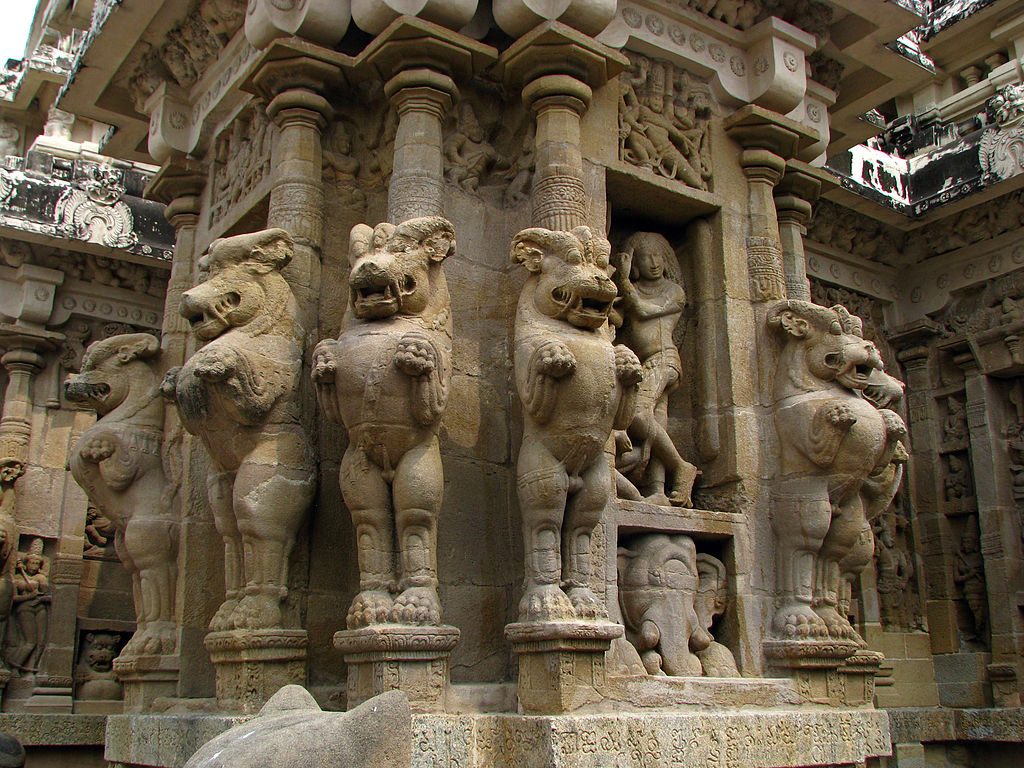
On the South-facing wall, you can see magnificent sculptures of Shiva as Umamaheswara and as Lingodbhava, flanked by Brahma and Vishnu. At a lower level to this sculpture, there are sculptures of flying Devas or Amaras. The West wall shows Shiva in Sandhya Tandava and Urdhva Tandava poses, accompanied by dancing ganas. There are also images of other gods including Parvati, Vishnu, Brahma, and Nandi.
Additionally, the North-facing wall depicts Shiva as Tripurantaka, the god who destroyed the three flying cities of Asuras. Here, the accompanying carvings are of Durga with her ganas. You can also see figures of Bhairavi, Jyeshta, and Kaushiki.
Furthermore, the vimana, the dome over the main shrine, shows Shiva in other forms – as Bhikshatana Murthy and Somaskanda. It also shows Shiva doing the Samhara Tandava, the dance of destruction.
Sculptures in the Temple Walls
The walls of the prakaras are also decorated with innumerable sculptures of gods, goddesses, and other divine Beings. The image of Ardhanarishwara sitting on a bull is captivating. Additionally, there are images of Durga, Bhavani, Kartikeya, Narasimha, Vishnu on Garuda, Thrivikrama, Brahma, and Gangadhara.
There are also sculptures of Puranic scenes like Shiva ganas destroying Daksha Yaga, Ravana and Vali praying to Atmalinga Chandikeshwara, and so on. In addition, the entrance wall houses eight mini shrines. Likewise, the gopuram has multiple shrines in square, rectangular, and apsidal styles.
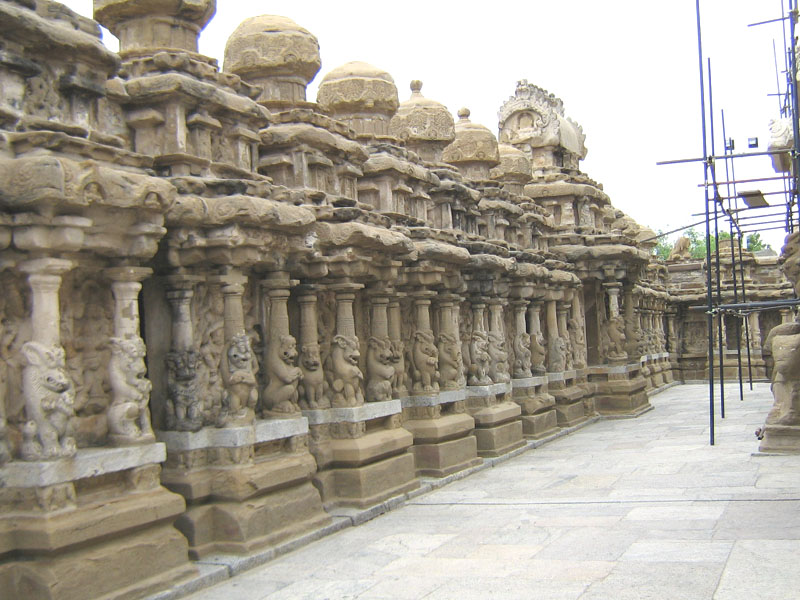
The Kanchi Kailasanathar temple also contains sculptures of Shiva as Dakshinamurthy, and Shiva holding an ancient veena. Many beautiful murals adorn the inner walls. This temple also contains many stone inscriptions.
The Special Circumambulatory Passage
Most important, Kanchi Kailasanathar temple has a special passage that signifies the cycle of rebirths. This is a small passage around the main shrine. The entryway is called Irappu Vasal, the Gate of Death. You have to crawl in, go around the shrine, and then crawl through another gate to exit. The name of the exit is Pirappu Vasal or the Gate of Birth. This symbolises that one dies and then takes another birth, in the karmic cycle. In fact, devotees believe that going through this passage can break the cycle of birth, death, and rebirth.
Kanchi Kailasanathar Temple Timings and Major Festival
You can visit this amazing temple from 6:00 am to 12:00 pm in the morning and also from 4:00 pm to 7 pm in the evenings. Maha Shivaratri is the major festival here. Thousands of devotees gather at this temple on this occasion, to worship Kailasanathar, the Lord of the Cosmic Mountain.
Plan Your Visit
Kanchipuram is the ‘city of a thousand temples’. It is divided into three parts – Shiva Kanchi, Vishnu Kanchi, and Jain Kanchi. Kanchi Kailasanathar Temple is in Shiva Kanchi. Chennai Meenambakkam is the nearest airport. You can then reach Kanchi from Chennai by bus or train. Kanchipuram is around 75 km away from Chennai.
Kanchi Kailasanathar temple is a place that shows off the rich architectural heritage of India. Its merit as an example of early Dravidian architecture is so great, that the temple is under the administration of the Archaeological Survey of India. A visit to this temple in February-March during Maha Shivaratri can be a great experience.




